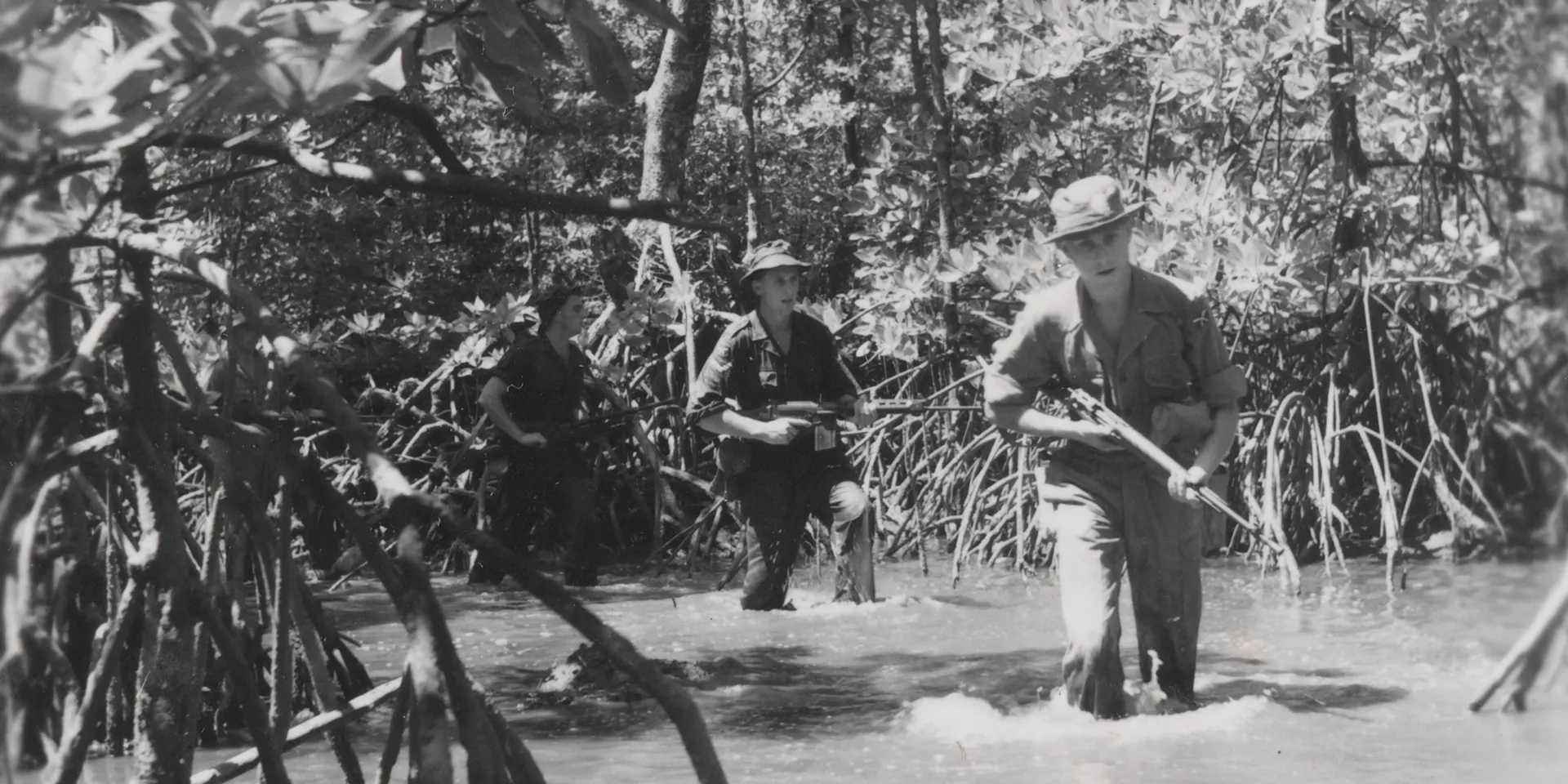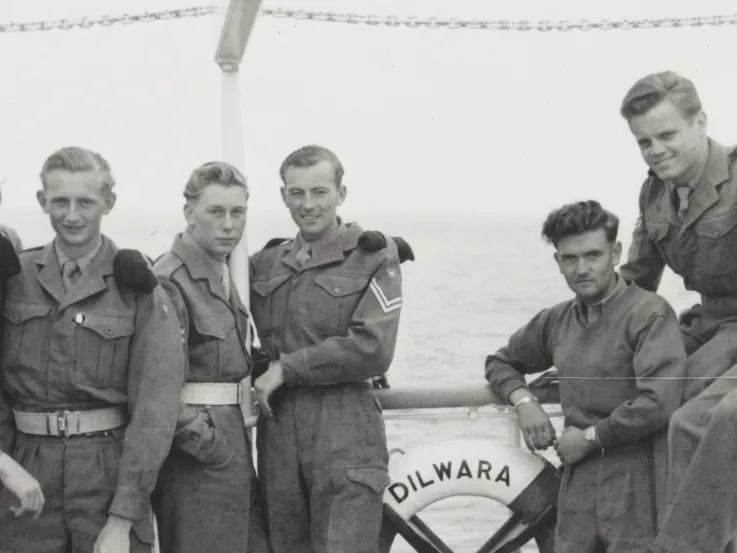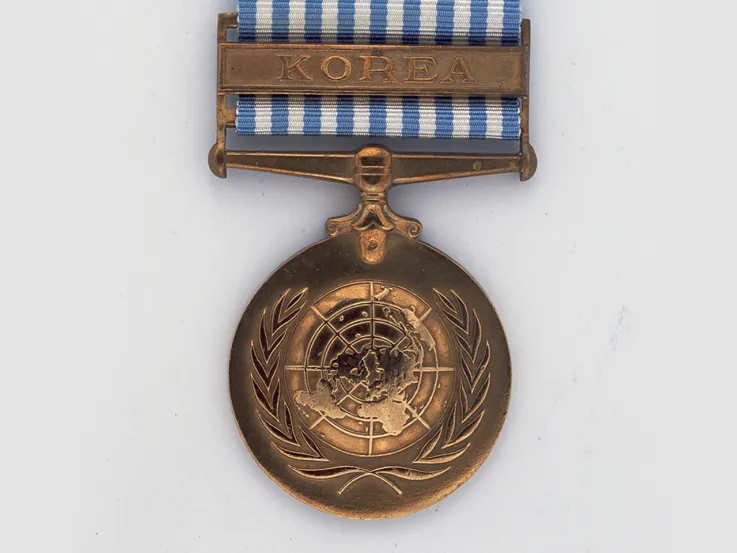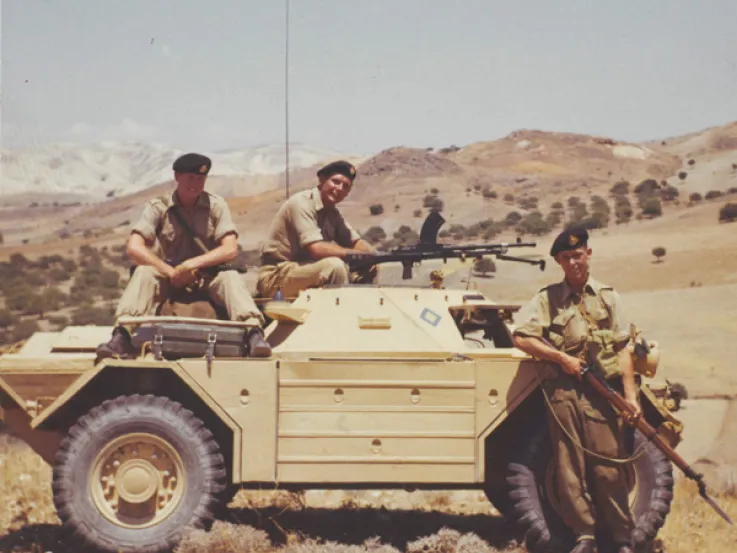National Liberation War
In June 1948, a state of emergency was declared in the British colony of Malaya (now Malaysia). The Malayan National Liberation Army (MNLA) - the armed wing of the Malayan Communist Party (MCP) - began attacking rubber plantations, mines and police stations, derailing trains and burning workers' houses.
The insurgency was described as an 'emergency' because insurers would not have compensated plantation and mine owners had it been labelled a 'war'.
Squatters
The communists of the MNLA were jungle based and supported by the impoverished Chinese population. Although many Chinese lived in the cities, others - known as 'squatters' - lived at the fringes of the jungle and could aid the guerrillas.
The MNLA and its supporters called the campaign the Anti-British National Liberation War.
Reinforcements
The initial British reaction to the crisis was to introduce emergency legislation, allowing suspects to be detained without trial. Curfews and movement restrictions were also imposed.
Malaya's original military garrison consisted of six Gurkha, three British and two Malay battalions. Reinforcements were sent from August 1948 onwards. Many of these British soldiers were conscripted National Servicemen.
Stalemate
The newly arrived troops set up positions near villages and then sent out patrols. The guerrillas had the benefit of local knowledge, while the British Army was hampered by a lack of decent intelligence.
The authorities were able to prevent the guerrillas from disrupting the economy, overrunning towns or controlling territory. But they were unable to stop their activities completely.
New tactics
In 1950, Lieutenant-General Sir Harold Briggs was appointed Director of Operations in Malaya. He realised the importance of isolating the guerrillas from their sources of food and creating a sense of security in populated areas so that people would be more willing to provide information.
He also persuaded the High Commissioner, Sir Henry Gurney, to set up committees containing representatives of all civil and military agencies involved in the campaign so that a co-ordinated response to the guerrillas could be formulated. The Malayan Police and Special Branch were given the task of gathering information.
New villages
In an effort to split the active insurgents from their passive supporters, Chinese 'squatters' were rehoused in purpose-built new villages. Clean water, proper housing, education and medical care were provided. However, many of the villages were surrounded by watchtowers and barbed wire, and the inhabitants' movements were strictly regulated.
By the end of 1951, over 400,000 people had been resettled in 500 new villages. The guerrillas were frequently arrested or killed as they approached them in search of food. Many guerrillas surrendered, but these techniques took time to perfect and the insurgents were able to continue their campaign.
Despite British attempts to cut off the link between the guerrillas and the Chinese community, fighting continued.
Templer takes over
On 6 October 1951, the communists managed to ambush and kill the High Commissioner, Sir Henry Gurney. General Sir Gerald Templer was appointed both Director of Operations and High Commissioner shortly after. He embraced Briggs's ideas with energy, ensuring that a co-ordinated command structure was established.
Templer placed great emphasis on the need to win the 'hearts and minds' of the population. He continued to build new settlements and promised independence once the guerrillas had been defeated. This won him the support of many nationalists.
Templer also involved the local population in the fight against the guerrillas by increasing the number of Malay battalions and strengthening the Home Guard raised to defend the new villages. These measures helped unite the racially divided Malayan people against the insurrection.
When Templer finally left his post in October 1954, most of Malaya was secure. He was promoted to field marshal in 1956.
‘The answer lies not in pouring more soldiers into the jungle, but in the hearts and minds of the Malayan people… The shooting side of this business is only 25 percent of the trouble and the other 75 lies in getting the people of this country behind us.’General Sir Gerald Templer — 1952

Troops negotiating a jungle waterway, 1959
Jungle training
As Templer's new policies began to take effect, the flow of information to the security forces increased. This allowed the British to take the offensive against the MNLA in jungle operations that usually called for stealth and a high degree of patience.
Newly arrived troops had to be taught how to live and fight in the tropical forests. Training occurred at a Jungle Warfare School, which also worked out the best tactics based on experience gained in the field. British battalions normally spent three years in Malaya.
On the whole, the Army's jungle operations were conducted according to the laws of war. A rare exception to this occurred in December 1948, when over 20 unarmed civilians were killed at Batang Kali.
Commonwealth at war
From 1954, there were usually 24 infantry battalions in Malaya from a wide range of Commonwealth countries, including Australia and New Zealand. These were supported by special forces, like the Special Air Service (SAS) Regiment.
With a police force of 40,000 men, it was now possible to clear an area of guerrillas. When an area had been swept, it was designated a 'White Area'. Restrictions on the local population were then lifted, encouraging them to oppose the return of any insurgents.
'Mainly we were looking for live CTs because the food and arms dumps were very well hidden. You’d have to have very good information on that sort of thing, which would come via intelligence or surrendered “bandits”. It was frowned on at one time to call them “bandits” – you had to call them Communist Terrorists or CTs – but “bandits” was the usual way of referring to them’.Private Bert Godsiff, Malaya — 1953-54
Independence
In August 1957, the Federation of Malaya was granted independence and the insurrection lost its rationale as a war of colonial liberation. Many guerrillas gave up their fight.
In 1960, the Emergency was declared over. More than 500 soldiers and 1,300 police had been killed during the conflict. Communist losses are estimated at over 6,000 killed and 1,200 captured.
The campaign was one of the few successful counter-insurgency operations undertaken by the Western powers. Still studied today, it provides many important lessons on how such campaigns should be conducted.


















